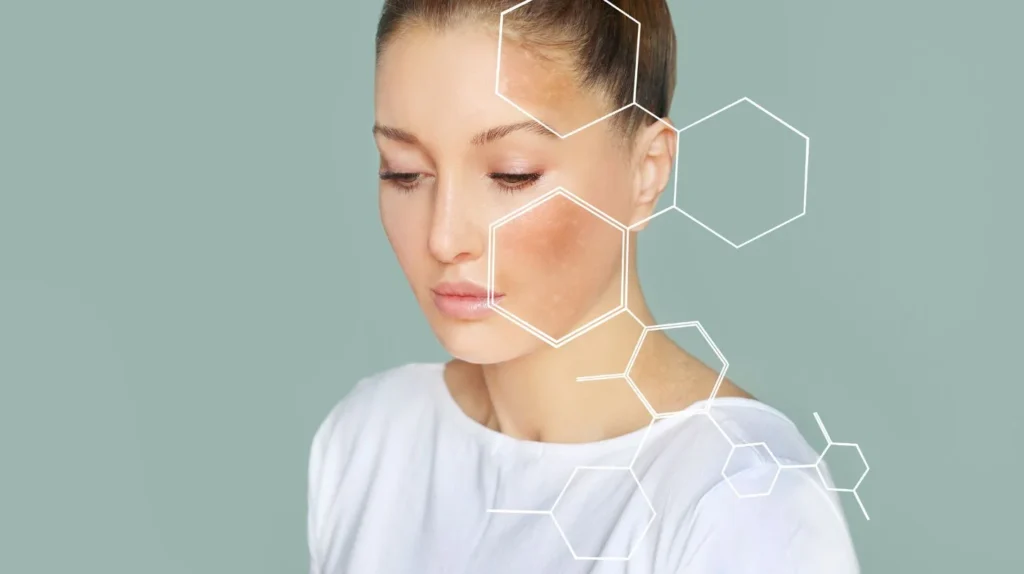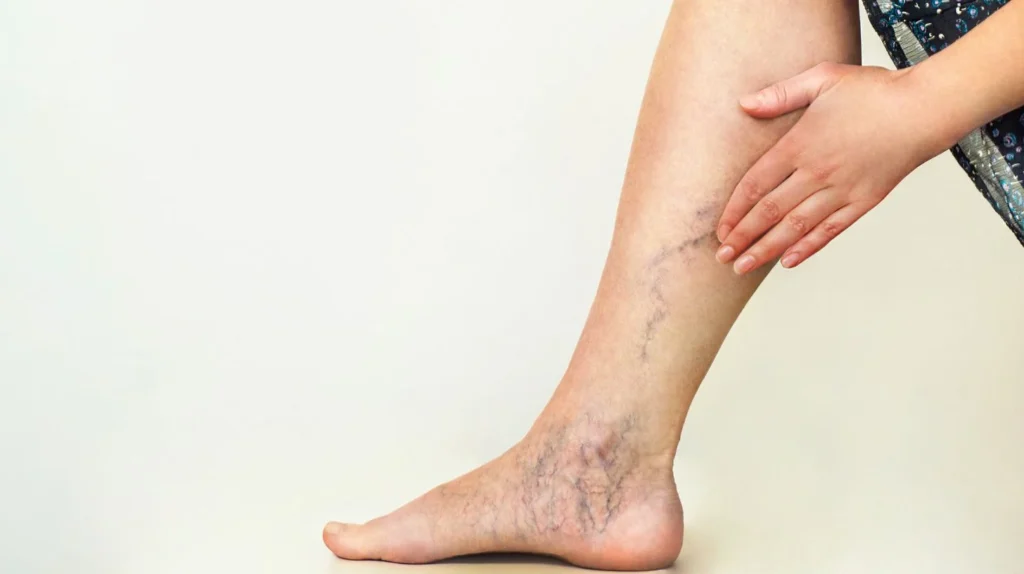
Pregnancy is a magical journey filled with excitement, anticipation, and a whole lot of changes. One of the most noticeable transformations is the skin changes during pregnancy. From the coveted “pregnancy glow” to the appearance of stretch marks, your skin tells a beautiful story of growth and love. But what exactly causes these changes, and how can you manage them? Whether it’s your first time expecting or you’re a seasoned mom, understanding the common skin changes during pregnancy can help you embrace this new phase with confidence and grace. Let’s explore the world of pregnancy and skin, and discover how you can glow from within!
Understanding Skin Changes During Pregnancy
Pregnancy is a time of profound transformation, and one of the most noticeable changes occurs in the skin. But why do these skin changes during pregnancy happen? The answer lies in the hormonal changes that take place. During pregnancy, the body experiences a surge in hormones like estrogen and progesterone. These hormonal changes can lead to various skin conditions, some of which may be entirely new to a pregnant woman.
For example, the increased blood flow and hormonal fluctuations can cause the skin to produce more oil, leading to a radiant “pregnancy glow.” On the flip side, these changes might also lead to acne or exacerbate existing skin conditions. Understanding these changes is essential for managing them effectively. If you notice any significant changes in your skin during pregnancy, it’s always a good idea to consult your doctor, as some skin conditions may require specific care or treatment.
Pregnancy Glow: The Radiance of Motherhood

Ah, the famed pregnancy glow! It’s one of those delightful changes during pregnancy that many expectant mothers look forward to. But what exactly is this glow, and why does it happen? Let’s delve into the science and beauty of pregnancy glow.
What is Pregnancy Glow?
Pregnancy glow is a term used to describe the radiant, dewy appearance of the skin that many pregnant women experience. This natural radiance is often noticeable in the face and is considered one of the positive skin changes during pregnancy.
Why Does Pregnancy Glow Occur?
The glow is primarily attributed to the increased blood flow and oil production on the skin. During pregnancy, the body’s blood volume increases by nearly 50%, leading to better circulation. This enhanced blood flow brings more nutrients and oxygen to the skin, giving it a healthy, rosy appearance.
Moreover, hormonal changes during pregnancy stimulate the oil glands, making the skin look more luminous and smooth. This combination of increased blood flow and oil production creates a beautiful pregnancy glow.
How to Enhance the Pregnancy Glow?
While the pregnancy glow is a natural phenomenon, you can take steps to enhance it further:
- Stay Hydrated: Drinking enough water helps keep the skin hydrated and supple, adding to the glow.
- Eat a Balanced Diet: Consuming a diet rich in vitamins and minerals, especially Vitamin C and E, supports healthy skin.
- Use Gentle Skincare Products: Opt for mild cleansers and moisturizers that suit your skin type. Avoid products with harsh chemicals that may cause irritation.
- Get Enough Sleep: Adequate rest is essential for overall well-being, including skin health.
Pregnancy Glow: A Temporary Change
It’s essential to note that the pregnancy glow is usually temporary and often fades after giving birth. However, it’s a beautiful part of pregnancy that many women cherish.
Stretch Marks: The Beauty of Growth

Stretch marks are one of the most common skin changes during pregnancy, affecting up to 90% of pregnant women. These pink, red, or purple streaks often appear on the breasts, abdomen, thighs, or buttocks. But what causes these stretch marks? As the body grows to accommodate the baby, the skin stretches, and the underlying collagen fibers may tear, leading to these characteristic marks.
While stretch marks are a natural part of pregnancy, many women seek ways to manage them. Creams containing ingredients like cocoa butter or vitamin E oil may help keep the skin hydrated and supple. Regular moisturizing can reduce itching and discomfort associated with stretching of the skin. It’s important to note that while these methods may improve the appearance of stretch marks, they may not prevent them entirely. Embracing stretch marks as a beautiful symbol of growth and motherhood can also be a positive way to cope with this change. For more tips on maintaining a healthy pregnancy, you can refer to this essential roadmap.
Acne: A Common Skin Condition During Pregnancy
Acne is a common skin condition that many women experience during pregnancy, especially in the first trimester. The hormonal changes that occur during pregnancy can lead to increased oil production in the skin, resulting in acne. Some women may notice a worsening of pre-existing acne, while others may develop acne for the first time.
Managing acne during pregnancy can be a bit tricky, as not all acne treatments are safe for pregnant women. It’s essential to consult your doctor before using any over-the-counter acne products. Gentle cleansing with a mild soap, avoiding excessive scrubbing, and using oil-free moisturizers can help manage acne. Sunscreen is also vital, as pregnancy can make the skin more sensitive to the sun. For more information, you can read our article on on safe beauty treatments during pregnancy.
Melasma: The Mask of Pregnancy

Melasma, often referred to as the “mask of pregnancy,” is a skin condition characterized by dark, discolored patches on the face. It’s particularly common during the second and third trimesters and is triggered by hormonal changes during pregnancy. These changes stimulate the melanocytes, the cells that produce pigment in the skin, leading to melasma.
Managing melasma requires a gentle approach. Using a broad-spectrum sunscreen daily can prevent further darkening of the skin. Skin-lightening creams containing ingredients like hydroquinone should be avoided during pregnancy, as they may not be safe for the baby. Instead, focusing on gentle skincare and embracing the natural changes in your skin may be the best approach. Melasma often fades after the baby is born, but if it persists, consulting your doctor for appropriate treatment is advisable.
Intrahepatic Cholestasis of Pregnancy: A Rare Skin Condition
Intrahepatic cholestasis of pregnancy (ICP) is a rare but serious skin condition that occurs in the third trimester. It’s characterized by intense itching, particularly on the hands and feet, without any visible rash. ICP is caused by the liver’s inability to process certain bile acids, leading to a buildup in the bloodstream, which then triggers the itching.
ICP requires immediate medical attention, as it may cause complications for both the mother and the baby. Treatment often involves medications to reduce bile acid levels and regular monitoring to ensure the baby’s well-being. It’s essential to consult your doctor if you experience persistent itching, especially if it’s accompanied by jaundice or other symptoms.
Linea Nigra and Other Skin Tags
Linea nigra is a dark line that appears on the abdomen, running from the belly button to the pubic area, during pregnancy. It’s a common skin change that occurs due to increased melanin production, often becoming more noticeable in the second half of pregnancy. Linea nigra is harmless and usually fades after the baby is born.
In addition to linea nigra, some pregnant women may notice the appearance of skin tags. These small, soft growths often appear in areas where the skin rubs together, such as the neck, armpits, or under the breasts. Skin tags are benign and are also related to hormonal changes during pregnancy.
Managing linea nigra and skin tags doesn’t require any specific treatment. Gentle skincare and embracing these natural changes are often the best approach. If skin tags are bothersome, they can be removed by a doctor after pregnancy.
Varicose Veins: A Common Change

Varicose veins are another common skin change that many pregnant women experience. These enlarged, twisted veins typically appear on the legs and can be blue or dark purple. They occur when the increased blood flow during pregnancy puts extra pressure on the veins, causing them to become swollen and more visible.
While varicose veins are usually harmless, they can cause discomfort, itching, or a heavy feeling in the legs. Wearing supportive stockings, elevating the legs, and engaging in regular exercise can help alleviate these symptoms. Avoiding long periods of standing and maintaining a healthy weight can also prevent or minimize varicose veins.
Polymorphic Eruption of Pregnancy: Understanding the Itch
Polymorphic eruption of pregnancy (PEP), previously known as pruritic urticarial papules and plaques of pregnancy (PUPPP), is an itchy skin condition that usually occurs in the third trimester. It often starts with red, itchy bumps on the abdomen and can spread to other parts of the body.
PEP is not harmful to the baby, but it can be extremely uncomfortable for the mother. The exact cause of PEP is unknown, but it’s believed to be related to the stretching of the skin as the baby grows. Treatment typically involves topical creams to relieve itching and, in more severe cases, oral medications prescribed by a doctor.
Understanding the itch and managing it with proper care can make this part of pregnancy more bearable. If you’re experiencing itchy skin or other skin lesions specific to pregnancy, don’t hesitate to consult your doctor.
You can explore other body changes in pregnancy in our detailed guide about 13 unmissable body changes during pregnancy.
Key Takeaways
Pregnancy brings a variety of skin changes, including pregnancy glow, stretch marks, acne, and melasma, often due to hormonal changes.
Some skin conditions, like intrahepatic cholestasis of pregnancy, are rare but require immediate medical attention.
Proper skincare, including the use of sunscreen and moisturizing creams, can help manage many common skin changes.
Most skin changes during pregnancy are temporary and tend to fade after the baby is born, but consulting a doctor for specific concerns is always advisable.
The Bottom Line
Pregnancy is a beautiful journey filled with excitement and anticipation, but it also comes with its unique set of challenges. Skin changes during pregnancy are common and can range from mild annoyances like stretch marks to more serious conditions like intrahepatic cholestasis of pregnancy. Understanding these changes and knowing how to manage them can make the experience more comfortable and enjoyable. Remember, every pregnancy is unique, and your skin may respond differently. Embrace these changes as part of the incredible process of bringing new life into the world, and don’t hesitate to seek professional medical advice if you have specific concerns or symptoms.
Frequently Asked Questions (FAQs)
What common skin changes might I experience during pregnancy?
During pregnancy, you might experience common skin changes like stretch marks, acne, melasma (also known as the “mask of pregnancy”), and linea nigra. These changes are often due to hormonal fluctuations.
Can pregnancy cause skin diseases or rare skin conditions?
Yes, pregnancy can cause rare skin conditions like intrahepatic cholestasis of pregnancy, prurigo of pregnancy, and pruritic folliculitis of pregnancy. Consultation with a doctor is essential for proper diagnosis and treatment.
Will my hair growth change along with skin changes during pregnancy?
Pregnancy hormones often lead to increased hair growth. This change, along with other skin and hair changes, is common during pregnancy and usually returns to normal after giving birth.
What can I do to keep my skin healthy late in my pregnancy?
Keeping your skin moisturized, using sunscreen, and maintaining a healthy diet can improve skin during pregnancy. Specific skin problems may require consultation with a doctor for specialized care.
Is chloasma common during the first month of pregnancy?
Chloasma, or melasma, is more common during the second or third trimester of pregnancy. It’s often referred to as the “mask of pregnancy” and may cause dark patches on the face.
Will my skin return to normal after delivery?
Most skin changes during pregnancy, including stretch marks and melasma, tend to fade after the baby is born. Some may take a few months after giving birth to return to normal.
Can pregnancy affect my skin color or cause changes in moles?
Pregnancy may cause changes in skin color, including darkening of moles or the appearance of tiny red veins. These changes are usually temporary but should be monitored by a healthcare professional.
Is dry skin a common problem during pregnancy?
Yes, dry skin is a common skin problem during pregnancy. Keeping the skin moisturized with creams and lotions can help alleviate this condition.





